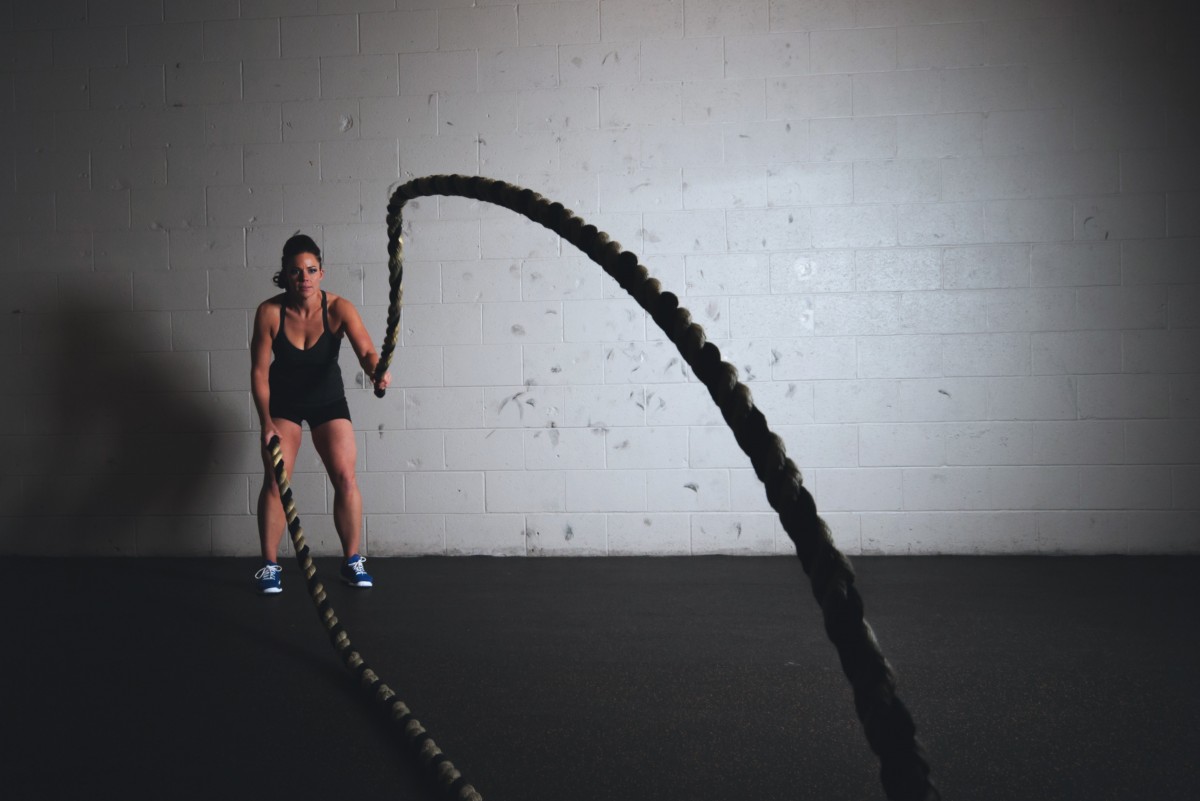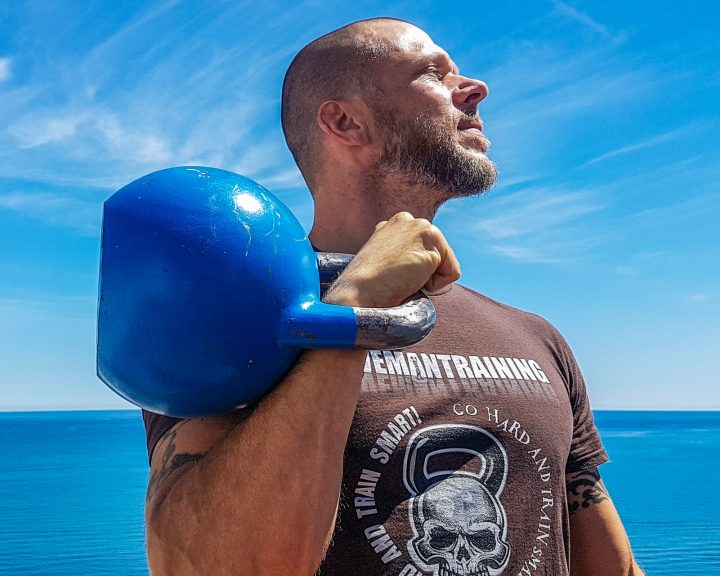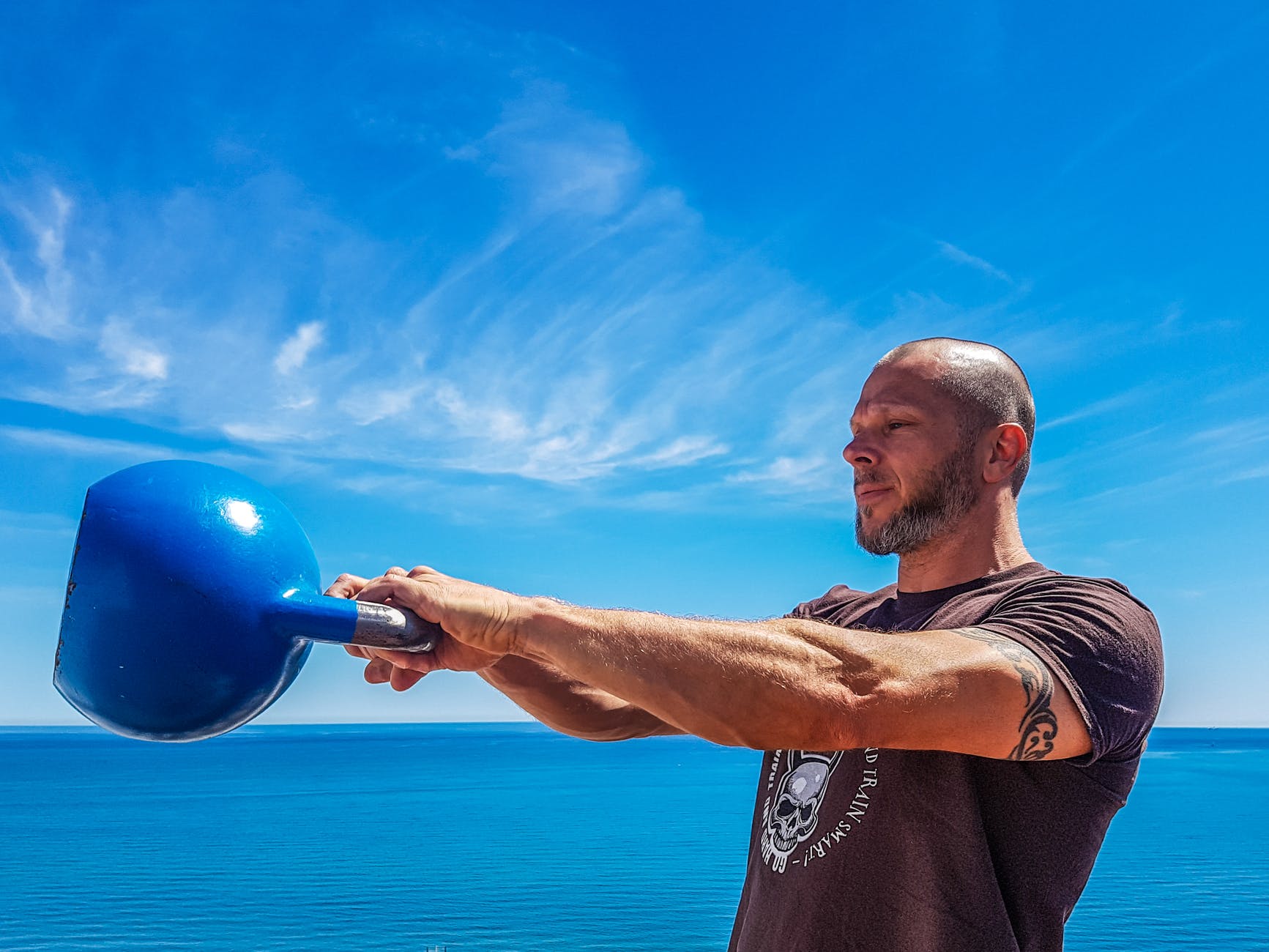It’s easy to approach an athlete’s training in a myopic manner, in other words to view the athlete’s training from only our discipline. When we do this, we do a disservice to the athlete because we fail to take into account the other things that are going on in the athlete’s life. This is evident when we forget why athletes are performing strength and conditioning, which is to improve their athletic performance. When we lose sight of that, we develop and implement programs that may develop athletes who are good at training – but those programs may negatively affect their sports performance.
Let me give you an example below:
| Day One | Day Two | Day Three | Day Four | Day Five | |
| Strength | Power clean, 3x3x70%Clean pulls, 3x3x70%
Back squats, 3×12-15×70% Leg press, 3×12-15 Lunges, 3×12-15 each leg Romanian deadlifts, 3×12-15 Back raises, 3×12-15 Calf raises, 3×15-20 |
Push jerk, 3x3x70%Bench press, 3×12-15×70%
Dumbbell bench press, 3×12-15 Pull-ups, 3xMax Bent-over rows, 3×12-15 Military press, 3×12-15 Biceps/triceps, 3×12-15 |
Off | Power snatch, 3x3x70%Snatch pulls, 3x3x70%
Front squats, 3×4-8×70% Split squats, 3×12-15 each leg Step ups, 3×12-15 each leg Good mornings, 3×12-15 Reverse hyperextensions, 3×12-15 Calf raises,3 x15-20 |
Push jerk, 3x3x70%Incline press, 3×12-15
Dumbbell incline press, 3×12-15 One-arm dumbbell rows, 3×12-15 each arm Lat pulldowns, 3×12-15 3-in-1 shoulders, 3×10 each Biceps/triceps, 3×12-15 |
| Plyometrics | Squat jumps, 10xBox jumps, 10x | Clapping push-ups, 3x10MB chest pass, 10x
|
Off | Standing long jumps, 10xHurdle hops, 10yards | MB forward toss, 10xMB backward toss, 10x |
| Speed | Technique drills, 10-15 minutesStride length drills, 3×10 yards
Starts, 5×10 yards |
Technique drills, 10-15 minutesStride frequency drills, 3×20 yards
Stride length drills, 3×40 yards Sprints, 3×60 yards |
|||
| Agility | Technique drills, 10-15 minutesPattern drills, 10-15 minutes | Technique drills, 10-15 minutes,Reactive drills, 10-15 minutes
|
|||
| Conditioning | Kettlebell / Heavy rope / Jump rope circuit, 10-15 minutes, 30 second stations | 20×100 yard sprints | Suspension training / core / bodyweight exercise circuit, 10-15 minutes, 30 second stations |
Looks like a pretty comprehensive workout plan, right? The program outlined above develops everything! This would be a great workout program for someone that is training to improve their fitness level and has lots of time on their hands. Here’s the problem, it’s too much for someone that is also practicing sports. Consider that most of these days will see the athlete spending about two hours a day working out, or 8-9 hours per week.
The challenge with trying to develop everything through training is that many athletes are spending at least two hours a day practicing their sport, some more. For an athlete, sports performance is the most important thing – everything else is secondary. Remember, the athlete may be in school, may need to study, may work, will want to have a life out of training, needs to find time to eat, needs to find time to sleep, etc.
Do athletes need to develop everything in their strength and conditioning? I think no, I think they need to address what’s important to advance their performance and keep them injury-free, the rest is ego. Some thoughts:
- Athletes need to be strong, to a point. I like to do this with one, focused training session each week but I try to keep this going all year. This is a total-body workout, usually the first strength training workout of the week.
- Athletes need to learn how to use their strength quickly. Several excellent tools for that; Olympic lifting variations, plyos, and med ball throws. Having said that, they don’t have to be great at any of these tools unless they are sport-specific. So, doing an Olympic lifting workout each week and 1-2 plyo/throw workouts each week is more than enough to address this quality.
- Speed and agility can be combined, they are on the field or the court.
- A conditioning session a week is great unless it is a weakness. Because athletes do so much running in their sport, in speed/agility training, and have so much lower body pounding via strength training I like to find alternative means of doing conditioning instead of long sprints.
With the above in mind, here’s an example of reworking that training program and keeping the training in perspective:
| Day One | Day Two | Day Three | Day Four | Day Five | |
| Strength | Back squats, 3×12-15×70%Romanian deadlifts, 3×12-15
Bench press, 3×12-15×70% Bent-over rows, 3×12-15 Military press, 3×12-15 |
Power snatch, 3x3x70%Power clean + Push jerk, 3×3+3×70%
Pulls, 3x3x70% |
Off | Superset: Front squats and dumbbell bench press, 3×4-8×70% + 3×12-15Superset: Lunges and pull-ups, 3×12-15 each
Superset: Good mornings and 3-in-1 shoulders, 3×12-15 each Back raises, 3×12-15 Superset: biceps/triceps, 3×12-15 each |
Off |
| Plyometrics | Squat jumps, 10xBox jumps, 10x | Standing long jumps, 10xHurdle hops, 10yards | |||
| Speed/Agility | Technique drills, 10-15 minutesStride length drills, 3×10 yards
Starts, 5×10 yards |
Technique drills, 10-15 minutesStride frequency drills, 3×20 yards
Stride length drills, 3×40 yards Sprints, 3×60 yards Reactive drills, 10-15 minutes |
|||
| Conditioning | Kettlebell / Heavy rope / Jump rope circuit, 10-15 minutes, 30 second stations | Suspension training / core / bodyweight exercise circuit, 10-15 minutes, 30 second stations |
Br reprioritizing and rearranging the training, several things happen:
- Day One’s session is reduced to 45 minutes in length
- Day Two’s session takes about 90 minutes
- Day Three takes 20-30 minutes including a warm-up
- Day Four takes about 90 minutes
- The entire week’s training is accomplished in a little over four hours.
The second program still develops everything, but it does so in a realistic manner that balances the other physical demands that the athlete has. What if we need to really target an aspect of the athlete’s performance? If this is necessary, then we’ll need to pair some things back in order to focus more on a desired quality. For example, let’s say we need to focus on the athlete’s ability to accelerate. The table below shows how things might be reorganized to focus on this aspect of training.
| Day One | Day Two | Day Three | Day Four | Day Five | |
| Strength | Back squats, 3×12-15×70%Romanian deadlifts, 3×12-15
Bench press, 3×12-15×70% Bent-over rows, 3×12-15 Military press, 3×12-15 |
Power snatch, 3x3x70%Power clean + Push jerk, 3×3+3×70%
Pulls, 3x3x70% |
Off | Off | Superset: Front squats and dumbbell bench press, 3×4-8×70% + 3×12-15Superset: Lunges and pull-ups, 3×12-15 each
Superset: Good mornings and 3-in-1 shoulders, 3×12-15 each Back raises, 3×12-15 Superset: biceps/triceps, 3×12-15 each |
| Plyometrics | Squat jumps, 10xBox jumps, 10x | Standing long jumps, 10xHurdle hops, 10yards | |||
| Speed/Agility | Technique drills, 10-15 minutesStride length drills, 3×10 yards
Starts, 5×10 yards |
Technique drills, 10-15 minutesResisted starts, 3×10 yards
Starts, 5×10 yards Start/stop/start agility drills, 10-15 minutes |
Technique drills, 10-15 minutesStride frequency drills, 3×20 yards
Stride length drills, 3×40 yards Sprints, 3×60 yards Reactive drills, 10-15 minutes |
||
| Conditioning | Kettlebell / Heavy rope / Jump rope circuit, 10-15 minutes, 30 second stations |
As you can see, the strength training remains the same except that the last day of strength training has been moved further back in the week. This is to allow for three days of speed and agility training during the week which puts a real emphasis on starting and accelerating. Because the strength and sped/agility training has been re-organized, the plyometric training has been moved to Days Two and Five. The conditioning has been paired back to allow for more speed/agility training and has been moved to day Four, which is otherwise an off day.



